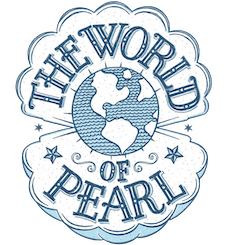In my next chapter of all the awesomeness I am learning here on my Mexican pearl farm trip is the burden of being a mollusk that lives in shallow water. The species of mollusk in shallow water that I am referring to is called the Pinctada mazatlanica. This species of mollusk loves warm, tropical waters. In fact, although this population of mollusks has adapted itself to live in cooler waters, it refuses to grow in the cold! The Mazatlantica only grows in the summertime and in shallow waters!

It’s closest rival, in terms of nacre and pearl production, is the black lipped oyster if the south Pacific. Do you see the colorful lip on this Mazatlantica shell? This mollusk can produce black and green pearls along with other colors. And did I mention it loves warm water. See if you can spot these mollusks along the shoreline!

Did you spot them? These waters actually contain thousands of this once almost extinct species. You can spot a few here. Mollusks are teaming with life that attach to their surfaces. They can be spotted because they are darker than the surrounding rocks. Here, I will show you a couple:

Although this species is being revitalized in the Sea of Cortez, there is not an active commercial farming trade for these mollusks. Read more on the current pearl production in Mexico here.
So, what is the burden of a mollusk shallow water? Well, they are oh so easy to fish for! In 1596 Admiral Sebastian Vizcaino reported that pearl oysters “could be seen with the naked eye through the crystalline sea.” What a delightful proposition for explorers who coveted these pearls and for the monarchs that funded such expeditions! The Pinctada Mazatlantica simply disappeared. It took a while, naturally, but with the extent that these mollusks were overfished, their populations simply could not survive.
Exploited throughout the centuries, by the early 1900s, half million of these mollusks were harvested annually. Pearls were difficult to find by this point but the mother of pearl was enticing as well. Finally, by 1940 the Mexican government banned fishing of the Pinctada Mazatlantica and this ban in still in effect today.
India
Sources: Las Perlas de California by Cuauhtémoc Morgan along with my own travels to the Sea of Cortez pearl farm
I am a modern day treasure hunter who travels the world for gorgeous pearls and amazing adventures. I own a pearl jewelry and jewelry repair business, ThePearlGirls.com, with a cute retail store in Athens, GA. I also have a Pearl Travel business and travel blog at TheWorldofPearl.com.


